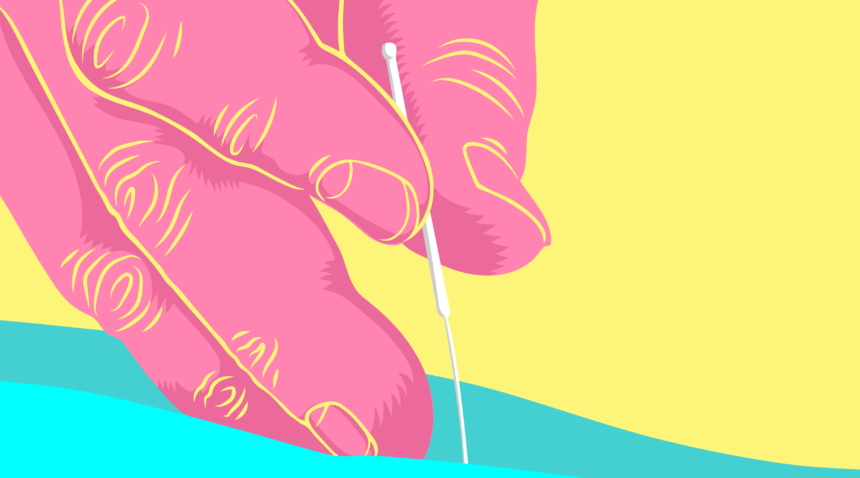You pulled a muscle at the gym, and nothing seems to ease your pain. Then your physical therapist suggests a treatment called dry needling. Just what is dry needling, and how can it help that lingering pain?
UNC physical therapist Christine Carr, MPT, answers questions about dry needling and why it might be right for you.
What is dry needling?
Muscles sometimes develop knotted areas called trigger points that can be very sensitive and painful when touched. Dry needling is treatment that uses a very thin needle to penetrate the skin and treat these trigger points in your muscle.
How does it work?
When you put the needle in a trigger point in a muscle, it releases the muscle, which then goes back to its resting length. Once released, you have less pain in the muscle and an increase in range of motion.
Who can benefit from it?
If you’ve had a muscle injury, it can help. Some people come in to try it when nothing else seems to work, while others use it as part of a treatment plan that includes other types of physical therapy, such as joint mobilizations (when your therapist moves your joints in specific directions with his or her hands), stretching or soft tissue work (massage).
Does dry needling help with torn ligaments?
No. It is more for muscle pain. It wouldn’t be beneficial for that type of injury or a different type of pain, like gallbladder pain.
How long does a dry needling session last?
Usually about 20 minutes if that is the only treatment, or it can be part of a longer physical therapy session. For example, if a patient has a stiff shoulder, after I needled their shoulder, I’ll also do some range-of-motion exercises to help their shoulder. If their range is pretty good, I might try some light strengthening.
How many sessions do you need?
That varies depending on the problem and how long you’ve had it. I’ve had people that have one or two sessions and that’s all they need to feel good. But I also have patients who have chronic problems, and dry needling is a way to manage a chronic problem. I have several patients who come in once a month. They just get needled wherever they need it, and that’s how they help manage their pain.
How many needles do you use?
It depends on how many spots need needling and the patient. The first time or two, I probably would not needle them head to toe. I’d pick a few of the worst spots. But I have a patient who has chronic neck and shoulder pain. With someone like her, I probably would use at least a dozen needles.
Does dry needling hurt?
The actual inserting of the needle does not hurt—these needles are very thin. Sometimes the muscle will twitch when you put it in, and it can feel sore if that happens. You usually will feel a little muscle ache or soreness for a day or two after that feels like you worked out that muscle.
Is dry needling covered by insurance?
No. It is a self-pay service.
Think you might want to try dry needling? Talk to your doctor or physical therapist. Need one? Find one near you.

